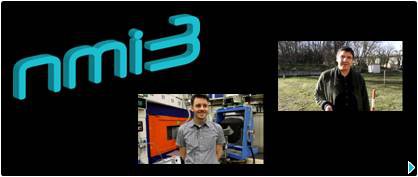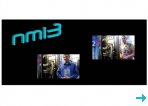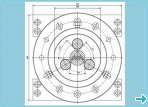New humidity chamber will shed light on processes behind Alzheimer’s disease
The advanced neutron tools for soft and bio-materials JRA
Inês Crespo, Information Manager, 18/07/2014
A Joint Research Activity (JRA) supported by NMI3 is working on a new humidity chamber. The instrument will be used for neutron scattering experiments to reproduce the human body conditions in order to shed light on biological processes such as the development of Alzheimer’s disease.
I have been to the Helmholtz-Zentrum Berlin and spoke with Dirk Wallacher and Matthew Barrett, the PhD student in charge of the project, who told me all about this work as you can see in the video. Thanks to NMI3, they can work in close collaboration with a team in the Institut Laue-Langevin (ILL) in France.
The human body is a moist and warm environment. To study how molecules behave inside it, it is necessary to reproduce these conditions in the lab. As part of this JRA, the team is building a new humidity chamber capable of providing continuous humidity and to reach very high relative humidity to represent what happens in situ in biological systems. The new humidity chamber will be used to analyse samples of biological and soft matter materials. For instance, Matthew will investigate the amyloid-beta protein which is involved in Alzheimer’s disease.
Listening to the neutron user community
To start the project, the team asked users to share their experiences and needs with regards to sample environment, and to identify limitations of the humidity chamber that could be improved upon, so that the final product can suit as many members of the European neutron scattering community as possible. Once the humidity chamber is built and installed, users from all over Europe will be able to analyse their samples with the best possible sample conditions at neutron facilities including HZB and ILL.
After this step, they worked closely with a team at ILL to decide which parameters were important and how to incorporate these in the humidity chamber. Through an iterative design process and simulations they have determined the absolute best optimal geometry for the new humidity chamber. Now that the design process is finished, the group will soon be able to use the first prototype.
Last year at the ICNS conference in Edinburgh, Matthew has presented a poster on the design of the future humidity chamber. He definitely convinced the jury on his good work as he won a prize for best student poster. He is now looking forward to using Europe’s neutron beamlines to test his samples so that he can look at the structure and function of proteins in membranes.
The benefits of taking part of NMI3
According to Dirk and Matthew, taking part of an NMI3 JRA fosters collaboration with other JRA members and makes it possible to meet many skilled and interested users from all-over Europe who provide valuable suggestions. Furthermore NMI3 makes it easier to reach out to the scientific community about the project’s developments so that they know when and how to use the final product.
NMI3 thanks Dirk Wallacher and Matthew Barrett for reviewing this article.
Related articles
Improving neutron scattering data quality: a multi-angle light scattering setup
During a neutron scattering experiment the sample might degrade and produce wrong results. In our new video, researchers explain their work on a set up to control the sample quality along time so that false data can be discarded. This work will improve the data quality. You can see the video and read the article here .
To broaden research possibilities: a new pressure cell
Henrich Frielinghaus and Marie-Sousai Appavou from the JCNS-MLZ are developing a new pressure cell. This work, which is funded by NMI3, will broaden the research possibilities in several scientific fields. You can read the article here .
Update on the advanced neutron tools for soft and bio-materials JRA
Annie Brûlet, the coordinator of this Joint Research Activity, told us about this collaboration’s main goals and achievements here .



